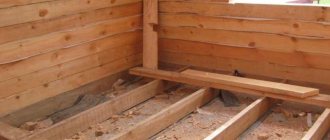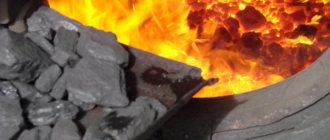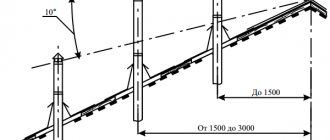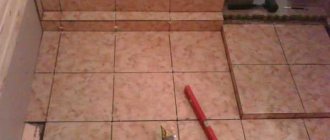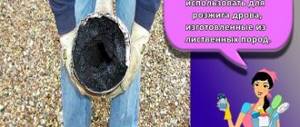The modern, fast and fashionable pace of life is the desire to stand out and be different from others. According to piercing wearers, it gives a person inner freedom, liberated behavior, and emphasizes his sexuality.
The piercing procedure is far from new; the practice of decorating the body by piercing various areas of the skin was practiced by the ancient Bedouins and Egyptians.
Piercing the nose and wearing jewelry in the left nostril is a distinctive sign of ancient and modern India. Piercing has deep historical roots and history.
Piercing is a medical, invasive procedure that involves penetration through the skin, mucous membranes, that is, through the natural external barriers of the human body.
About piercing
Sometimes people are so into piercings that they look creepy. And the procedure itself is far from harmless; it is always accompanied by one or another risk.
If you decide to get a piercing, then the procedure must be done in a specialized salon with a qualified master.
Even with classic ear piercing, which can also be called piercing, a variety of complications are likely. This includes inflammation, suppuration, and long, non-healing punctures.
The human body does not always respond positively to the presence of a foreign body.
Method No. 3: Panel ceiling
Assembly diagram of a panel ceiling section
In the diagram:
- A - section bars;
- B - sheathing made of planed boards;
- B - points for fixing the sheathing using nails.
This is the most complex and least common version of clapboard cladding, which is used very rarely. Its main difference is that it is assembled from panels made in advance on the ground, similar to troughs. Otherwise, it also goes through all the insulation processes.
Why do piercings?
Of course, people want to be different from the bulk of those around them and to attract attention. Young creatures are eager to look older, capable of serious (in their opinion) actions.
Most often, the matter does not end with one puncture; the next step will be a tattoo, another puncture, an extravagant haircut, and so on...
I asked my daughter why she got her tongue pierced, what prompted her to do it, and this is what she told me:
Most likely, it was inspired by fashion, subculture and, of course, friends. Even now I want to get a couple more ear piercings, Helix or Tragus. Looks beautiful if you choose the decorations...
I can say that this is self-expression...
And I don’t even remember my feelings anymore. The hole in the tongue closed almost immediately as soon as I pulled out the barbell. I remember one thing for sure: it didn’t hurt to pierce...
Choice
The chimney is installed to prevent combustion products from entering the steam room, as well as into the human lungs. Everyone knows that this can significantly undermine the condition of even the healthiest person. Therefore, the chimney is one of the most important elements of the bathhouse design.
If we talk about the materials used to create it, the choice here is small:
- Brick;
- Metal;
- Ceramics.
Of course, these materials can be combined quite successfully.
Information! Regular white paint will help determine if the chimney is leaking! On a painted chimney it will darken where smoke penetrates.
Some time ago, brick chimneys were especially popular because they are simple, convenient and cheap.
Nowadays, metal chimneys are not inferior to them in popularity. However, let us examine in more detail all the advantages and disadvantages of each type.
Advantages of a brick chimney:
- Strength and durability;
- Fire safety;
- Thermal insulating properties;
- Economical.
Disadvantages of a brick chimney:
- In the absence of experience, it will be quite difficult to build a brick chimney, so you will have to resort to the help of professionals;
- Due to the roughness of the inner surface of a brick chimney, soot and other combustion products will remain on the walls. A brick chimney will have to be cleaned much more often;
- Since brick structures are quite heavy, it is impossible to do without a foundation.
Next, let's look at metal chimneys in more detail. The material used for their manufacture is stainless steel, since it can withstand sudden temperature changes, as well as high humidity, which cannot be avoided in a bathhouse.
Advantages of metal chimneys:
- Thanks to the smooth inner surface, soot does not accumulate on the walls, which facilitates the process of cleaning pipes;
- Easy installation;
- A huge selection of ready-made metal chimneys on the market.
Disadvantages of metal chimneys:
- High thermal conductivity;
- The need for thermal insulation;
- Limitation in the choice of materials.
Information. The most popular representative of metal chimneys are sandwich pipes. They consist of an inner and outer pipe, at the junction of which a layer of thermal insulation is laid. You can build such a structure with your own hands; it is a fairly simple process.
Next in line are ceramic chimneys. They combine the advantages of both brick and metal pipes, and also have virtually no disadvantages:
- Easy installation;
- Low thermal conductivity;
- Fire safety;
- Good thermal storage.
Important! When choosing a chimney, it is better to give preference to straight structures, without bends. Mainly brick chimneys have these characteristics.
Is it possible to go to the bathhouse with a piercing?
Any puncture on the human body is an injury, an inflammatory process and a period of recovery of the body.
There is no operation in the world involving penetration through human flesh that does not cause consequences and heals quickly. Our body is cleverly designed; it protects itself in all possible ways from a foreign object.
Inflammation, swelling, bruises, purulent discharge, all this is a protective reaction of the body.
I’ll give you an example of a beautiful piercing from a girl I know; she made a piercing on her cheekbone and inserted wonderful glitter. A notable black eye was her companion for a long 2 weeks!
Therefore, during the healing period of the puncture, you should not take a steam bath or wash yourself. A fresh piercing is a wound that can become infected.
The bathhouse is at the same time the dirtiest and cleanest place. Bacteria and microbes multiply very quickly in a humid, warm environment; all body dirt and skin secretions are washed off with soap, shampoo and hot water. All this can get into an unhealed wound and cause a nasty infection.
Today, piercings are rarely done in artisanal conditions. During the operation, the necessary sanitary standards and special treatment of the puncture site are observed.
These precautions should minimize possible risks and complications, but it is better to postpone going to the bathhouse, sauna or swimming pool until the wound heals.
Correct placement of the chimney
How to install a pipe in a bathhouse through the ceiling?
First you need to decide on the location of the chimney. There are only two options:
- Internal structure. This refers to the location of the chimney pipe on the inside of the building. Thanks to this structure, all the heat emanating from the pipe is directed to heating the bath;
- External building. In this case, the pipe is located on the outside of the building. Of course, this greatly simplifies the installation process, but requires additional thermal insulation. It is also impossible to avoid overexpenditure of resources, since the chimney in such a situation “heats the street.”
Important! SNiP has established standards according to which the distance from concrete and brick slabs to lathing should be at least 13 cm, and from ceramic pipes - 25 cm or more.
Even at the bathhouse design stage, the location for the chimney pipe is determined. During the construction process, a hole equal to the diameter of the pipe is cut at the designated location.
How to make a chimney in a bathhouse through the ceiling and how to line a pipe in a bathhouse near the ceiling?
Let's figure out how to cut the ceiling for a pipe in a bathhouse. In order to create the correct ceiling markings, it is necessary to determine the vertical axis of the pipe.
The marking starts from the part through which the smoke comes out. The axis is directed towards it, which rests on the ceiling and this is where the center of the future hole for the pipe will be located.
If the pipe in the bathhouse runs through the ceiling and there is an attic, then the axis goes further - until it comes out of the roof.
The sandwich system has proven itself to be the safest device for removing waste from the combustion process.
It consists of two steel pipes, one of which is nested inside the other. The gap between them is filled with heat-insulating materials.
Before starting the construction of the structure, you must stock up on all the necessary materials:
- Pipes;
- Bends;
- Adapters.
Then you should clean them of all stickers, films and other packaging materials.
Attention! The diameter of the hole for the chimney outlet in the bathhouse through the ceiling must necessarily be larger than the diameter of the pipe itself so that insulation layers can be laid.
The gap that forms between the walls of the pipe and the ceiling structures must be insulated so that the heat does not leave the steam room. Insulating materials must be exclusively non-flammable substances.
How long does a piercing take to heal?
Each person is individual; our body’s reaction to surgery is different. Wound healing depends on the puncture site and the choice of metal decoration.
Genital piercings take about a month to heal, navel piercings can take up to 6 months to heal, but if the piercing is done incorrectly and is not deep enough, then the skin begins to grow under the jewelry and squeezes it out.
| Piercing site | Healing time |
| Nose | 4 to 10 weeks |
| Navel | 6 to 9 months |
| Lips | 2 to 4 weeks |
| Language | From 5 days to 2 weeks |
| Brows | 4 to 6 months |
| Ear cartilage | 6 months |
How to carry out: installation
The hole for the chimney pipe is cut using pre-prepared markings. Using a plumb line, determine the center of placement of the future pipe.
Information! To improve thermal insulation, it is better to place the chimney closer to the inside of the bathhouse.
Let's take a closer look at how to make a pipe in a bathhouse through the ceiling:
- When marking the pipe, it is advisable to use a plumb line, and it is necessary to start from the top point, since the pipe in the chimney bath is through the ceiling, and through the ceiling structure;
- If ready-made structures are used during pipe installation, you should follow the instructions included in the kit;
- If the design is carried out without ready-made industrial units, preliminary calculations of the passage box are made. A hole is made above the place in the ceiling where the pipe is planned to be installed. When cutting it out, it is necessary to take into account the indentations required by fire safety regulations.
Attention! It is best if the location of the pipe is calculated at the design stage. This will avoid mistakes and provide the necessary distance for safe pipe wiring between the load-bearing floor beams.
Do-it-yourself passage through the ceiling
You can also create a passage unit in the ceiling of a chimney in a bathhouse yourself. This is a more budget-friendly option, but it’s worth taking on only if you are completely confident in your abilities.
Attention! The chimney pipe must be completely sealed, otherwise vapors and combustion products will enter the room. Remember that carbon monoxide can cause serious poisoning!
Stainless steel is the most optimal option for use as a heat shield.
This is due to its mirror surface, which will act as an excellent decorative component in the chimney equipment.
Thermal insulation material is laid on the inside of the stainless steel sheet.
To do this, it is necessary to make a box that will act as an obstacle between the decorative trim and the floor beams of the ceiling structures.
Before making the floor box, you need to decide on the insulation material.
Drywall is perfect for this role, as it not only has excellent fire-resistant properties, but is also relatively inexpensive.
Gypsum is the basis of drywall and is a non-flammable material. It also has excellent thermal insulation properties. In addition to drywall, non-flammable materials such as mineralite or magnesite can be used to insulate the box.
Before starting the process of installing a chimney pipe in a bathhouse through the ceiling, you must prepare:
- Tin material;
- Non-flammable substance mineralite;
- Stainless steel sheet;
- Non-flammable substance basalt or sheets of basalt cardboard;
- Expanded clay or clay.
It is recommended that you begin the following steps before the finishing stage.
So, let's look at the process of wiring a pipe through ceiling structures without using factory passage units and how to isolate a pipe in a bathhouse from the ceiling:
- A box is made from tin. Dimensions are calculated based on the distance between two ceiling beams. To make the edges of the tin easier to bend, a board is used. They are usually fastened with rivets;
- Next, an opening is cut in the ceiling. The diameter of the hole must exceed the diameter of the pipe, since it is necessary to leave room for non-combustible thermal insulation materials;
- Next, a layer of mineralite is laid. This is done only in places where the pipe and ceilings may come into contact;
- The tin from which we previously made the tin box does not have sufficient rigidity. Therefore, strips of ;
- At the next stage, the stainless steel sheet must be cut. Do not remove the protective film too early; first, fix the place where the opening for the pipe will be cut. The diameter of the hole must also be larger than the diameter of the pipe in order to maintain a gap. The circle is cut out very carefully with metal scissors. It is necessary to prepare a small shield from a stainless steel sheet that can cover the joint. This is done for decorative purposes;
- Next, you need to prepare a heat-insulating layer, which is laid under the steel;
- The tin box is inserted into the hole and covered with a stainless steel sheet covered with a layer of thermal protection. Next, a pre-prepared decorative shield is attached;
- The pipe is insulated directly in the box using clay or expanded clay, poured into the box to the very top edge.
As a result, you get an aesthetically beautiful shield that is safe according to all fire standards.
Information! To ensure complete safety, it is recommended to cover the walls and ceiling near the chimney with an additional layer of heat-insulating, non-combustible material.

